On Spirallikeness of Entire Functions
Abstract
1. Introduction and Problem Formation
2. Main Results
- (I)
- If is a continuous function of ν in the interval of , then the function expressed as is also continuous in the interval of or on some sub-intervals of where the function expressed as is well-defined.
- (II)
- If is monotone (increasing or decreasing) in the interval of , then the function expressed as has the same behavior in the interval of or some sub-intervals of where the function expressed as is well-defined.
- (I)
- As , it can be represented as , where is the n-th zero of the functions (). The logarithmic differentiation of yieldsHence, forwhere I is the largest sub-interval of such that is well-defined. To prove that is continuous, let be a sequence in interval I such thatFor all , continuity of implies thatHence,
- (II)
- Now, suppose that is monotone in the interval of and in the interval. Using (16), we obtainSince , it follows that if is monotonic (increasing or decreasing), then exhibits the same monotonicity. □
- (I)
- Assume that is increasing in I. Function is in class in the following cases.
- (a)
- For , where is the unique solution of the equation expressed asin , provided that
- (b)
- For , provided that the right-hand limit is .
- (II)
- Assume that is decreasing in I. Function is in class in the following cases:
- (a)
- For , where is the unique solution of the equation expressed asin , provided that
- (b)
- For , provided that the left-hand limit is
- (III)
- The result applies in additional cases (that is, is neither increasing nor decreasing or one or more of the conditions from the previous cases is not satisfied), given that
- (I)
- For , we define the following function:Hence,As is increasing in interval I and satisfies (24), there exists a unique root () of the equation expressed as . Hence, if , then . In the case in which , the same result holds for all in interval I.
- (II)
- Assume now that is decreasing and satisfies (25). These conditions ensure the existence of a unique root () of the equation expressed as in interval I. Hence, for all in the interval, . Moreover, the same result holds when . Therefore, in both cases, the function is .
- (III)
- Suppose that is neither increasing nor decreasing or that one or more of the conditions from the previous cases is not satisfied. To show that , we analyze the conditions on under whichTherefore, if , then the desired result is obtained. □
- (I)
- Assume that is increasing in I. Function is in class in the following cases.
- (a)
- For , where is the unique solution of the equation expressed asin , provided that
- (b)
- For , provided that the right-hand limit is
- (II)
- Assume that is decreasing in I. Function is in class in the following cases:
- (a)
- For , where is the unique solution of the equation expressed asin , provided that
- (b)
- For , provided that the left-hand limit is
- (III)
- The result applies in additional cases, given that
- (I)
- Assume that is increasing in I. Function is in class in the following cases.
- (a)
- For , where is the unique solution of the equation expressed asin , provided that
- (b)
- For , provided that the right-hand limit is .
- (II)
- Assume that is decreasing in I. Function is in class in the following cases:
- (a)
- For , where is the unique solution of the equation expressed asin , provided that
- (b)
- For , provided that the left-hand limit is
- (III)
- The result applies in additional cases, given that
- (I)
- Assume that is increasing in ν in I. Function is in class in the following cases.
- (a)
- For , where is the unique solution of the equation expressed asin , provided that
- (b)
- For , provided that the right-hand limit is
- (II)
- Assume that is decreasing in ν in I. Function is in class in the following cases:
- (a)
- For , where is the unique solution of the equation expressed asin , provided that
- (b)
- For , provided that the left-hand limit is
- (III)
- The result applies in additional cases, given that
- (I)
- Assume that is increasing in ν on I. Function is in class in the following cases.
- (a)
- For , where is the unique solution of the equation expressed asin , provided that
- (b)
- For , provided that the right-hand limit is
- (II)
- Assume that is decreasing in ν in I. Function is in class in the following cases:
- (a)
- For , where is the unique solution of the equation expressed asin , provided that
- (b)
- For , provided that the left-hand limit is
- (III)
- The result applies in additional cases, given that
- (I)
- Assume that is increasing in ν in I. Function is in class in the following cases.
- (a)
- For , where is the unique solution of the equation expressed asin , provided that
- (b)
- For , provided that the right-hand limit is
- (II)
- Assume that is decreasing in ν in I. Function is in class in the following cases:
- (a)
- For , where is the unique solution of the equation expressed asin , provided that
- (b)
- For , provided that the left-hand limit is
- (III)
- The result applies in additional cases, given that
3. Application to Special Functions
3.1. Functions Involving sin Functions
3.2. Functions Involving Gamma Functions
- Integral form:
- Series expansion (for ):where is the Euler–Mascheroni constant.
3.3. Functions Associated the Normalized Bessel Functions
- (i)
- with ;
- (ii)
- with ;
- (iii)
- with and .
- 1.
- If , then for all , where is the unique root of the equation expressed as . Otherwise, when , for all .
- 2.
- The function expressed as for all , where is the unique root of the equation expressed as .
- 3.
- The function expressed for all , where is the unique root of the equation expressed sa .
- Moreover, from (55), we obtainThe well-known recurrence relation of the Bessel function (), leads to further simplification:Substituting the aboveinto (58) yieldsNow, according to [17], for , which is not a zero of , we haveHence,Consequently, the validity of either case (I-a or I-b) of Theorem 1 is determined by the limiting behavior of this expression as .Thus, if , then the equation expressed ashas a unique root in the interval of . According to Theorem 1, for all . In contrast, when , it follows that , thereby satisfying condition (I-b) of Theorem 1.
- By following a similar approach as in Part 1, we deriveFurthermore, applying the limit in (60), we obtainOn the other hand,
- The third part of the theorem follows the same technique as the previous ones, leading to the following two limits:andThus, the equation expressed ashas a unique root in the interval of . □
3.4. Examples Involving Derivatives of Bessel Functions
- (i)
- with ;
- (ii)
- with ;
- (iii)
- with .
- I.
- Suppose that has no zeros in . Then, we have three different situations:
- For , and , as stated in ,Then, for all with and , as stated in Theorem 1.
- For , and , as stated in ,Then, for all with and , as stated in Theorem 1. Here, is the unique root of in . Now, a calculation leads toThus, is reduced toHence, is the unique root of the equation expressed as
- For , and , as stated in , bothIn this situation, Theorem 1 fails to provide any conclusion regarding the Spirallikeness of .
- II.
- For an arbitrary , suppose that has m zeros in . These zeros are denoted and arranged as follows for further discussion:Then, let us consider the following intervals:Now, similar to case (I), we have three different situations that need to be handled separately in each interval. If in some or all intervals (, ), then in those intervals. Furthermore, if have a root () in any , , then for in the corresponding interval(s) (). Finally, if through in any interval (), the Spirallikeness cannot be described by Theorem 1 in that particular interval ().
- Suppose that ; then, for (see Figure 9).
- ; then, for (see Figure 10).
- Finally, we consider . In this case, we are unable to find the exact numeric value of for which . The graph in Figure 11 is asymptotic in nature. We note that Mathematica could not provide a clear graph for due to the very small value of the denominator. Therefore, we can not decide about a higher value of , but it is ensured that, at least for , Theorem 1 is inconclusive regarding the Spirallikeness of .
4. Outline of Several Other Examples
- Struve functions: Let represent the nth positive zero of the Struve function, denoted by . Then, can express (see [22]) in the following manner:For more details, we refer readers to [22,23]. Using (81), we can construct following example:Example 6.For ,
- (i)
- with ;
- (ii)
- with ;
- (iii)
- with and .
For , it follows thatFurthermore, for , we haveThus, the inclusion properties of ( in the class can be obtained by using the respective main theorems presented in Section refsec-2. In special cases, the Spirallikeness of the trigonometric functions mentioned above can also be established. - Wright Functions: The nth positive zero of is denoted by . Here, is the well-known Wright function [24]. For and , it was proven in [25] that the function expressed as possesses infinitely many real zeros, and its Weierstrass decomposition is expressed as follows:The infinite product converges uniformly on a compact subset of the complex plane. We present the following example related to .Example 7 (The normalized Wright function).For , denotes the n-th zero of the function expressed as . Then,The Wright function is related to the classical Bessel function of the first kind of by
- q-Bessel Functions: We consider Jackson and Hahn–Exton q-Bessel functions ( and ). For , , and , both functions are defined by series expansions:Here, is the well-known q-Pochhammer symbol defined as follows:There is a wealth of literature [30,31,32,33,34,35] on the q-extension of Bessel functions, and we confine our discussion to the specific requirements of this study. The Hadamard factorization for the following normalized q-Bessel functions is given in Lemma 5:Lemma 5([34]). For , the functions expressed as and are entire functions of order zero and pose the Hadamard factorization for the following form:where and are the positive zero of functions and , respectively.The above-mentioned facts provide us with the following examples:Example 8.For and , denotes the n-th zero of the q-Bessel functions (). Then,Example 9.For and , denotes the n-th zero of the q-Bessel functions (). Then,
5. Conclusions
Author Contributions
Funding
Data Availability Statement
Conflicts of Interest
References
- Alabkary, N.; Mondal, S.R. Radius of α-Spirallikeness of Order cos (α)/2 for Entire Functions. Mathematics 2025, 13, 796. [Google Scholar] [CrossRef]
- Mondal, S.R. Radius of k-Parabolic Starlikeness for Some Entire Functions. Symmetry 2022, 14, 637. [Google Scholar] [CrossRef]
- Rønning, F. Uniformly convex functions and a corresponding class of starlike functions. Proc. Am. Math. Soc. 1993, 118, 189–196. [Google Scholar] [CrossRef]
- Rønning, F. On starlike functions associated with parabolic regions. Ann. Univ. Mar. Curie-Skłodowska Sect. A 1991, 45, 117–122. [Google Scholar]
- Ali, R.M. Starlikeness associated with parabolic regions. Int. J. Math. Math. Sci. 2005, 2005, 561–570. [Google Scholar] [CrossRef]
- Ali, R.M.; Singh, V. Coefficients of parabolic starlike functions of order ρ. In Computational Methods and Function Theory 1994 (Penang); Series on Approximation and Decomposition; World Scientific Publishing: Teaneck, NJ, USA, 1995; Volume 5, pp. 23–36. [Google Scholar]
- Ma, W.C.; Minda, D. Uniformly convex functions. Ann. Pol. Math. 1992, 57, 165–175. [Google Scholar] [CrossRef]
- Aghalary, R.; Kulkarni, S.R. Certain properties of parabolic starlike and convex functions of order ρ. Bull. Malays. Math. Sci. Soc. 2003, 26, 153–162. [Google Scholar]
- Kanas, S.; Wiśniowska, A. Conic domains and starlike functions. Rev. Roumaine Math. Pures Appl. 2000, 45, 647–657. [Google Scholar]
- Libera, R.J. Univalent α-spiral functions. Can. J. Math. 1967, 19, 449–456. [Google Scholar] [CrossRef]
- Selvaraj, C.; Geetha, R. On subclasses of uniformly convex spirallike functions and corresponding class of spirallike functions. Int. J. Contemp. Math. Sci. 2010, 5, 1845–1854. [Google Scholar]
- Ravichandran, V.; Selvaraj, C.; Rajagopal, R. On uniformly convex spiral functions and uniformly spirallike functions. Soochow J. Math. 2003, 29, 393–405. [Google Scholar]
- Deniz, E.; Szász, R. The radius of uniform convexity of Bessel functions. J. Math. Anal. Appl. 2017, 453, 572–588. [Google Scholar] [CrossRef]
- Andrews, G.E.; Askey, R.; Roy, R. Special Functions; Cambridge University Press: Cambridge, UK, 1999. [Google Scholar]
- Watson, G.N. A Treatise on the Theory of Bessel Functions; Cambridge University Press: Cambridge, UK, 1944. [Google Scholar]
- Olver, F.W.J.; Lozier, D.W.; Boisvert, R.F.; Clark, C.W. (Eds.) NIST Handbook of Mathematical Functions; U.S. Department of Commerce, National Institute of Standards and Technology: Washington, DC, USA; Cambridge University Press: Cambridge, UK, 2010; 951, With 1 CD-ROM (Windows, Macintosh and UNIX). [Google Scholar]
- Landau, L.J. Ratios of Bessel functions and roots of αJν(x)+xJν′(x)=0. J. Math. Anal. Appl. 1999, 240, 174–204. [Google Scholar] [CrossRef][Green Version]
- Mercer, A.M. The zeros of as functions of order. Int. J. Math. Math. Sci. 1992, 15, 319–322. [Google Scholar] [CrossRef]
- Ismail, M.E.H.; Muldoon, M.E. Bounds for the small real and purely imaginary zeros of Bessel and related functions. Methods Appl. Anal. 1995, 2, 1–21. [Google Scholar] [CrossRef]
- Baricz, Á.; Çağlar, M.; Deniz, E. Starlikeness of Bessel functions and their derivatives. Math. Inequal. Appl. 2016, 19, 439–449. [Google Scholar] [CrossRef]
- Kanas, S.; Gangania, K. Radius of Uniformly Convex γ-Spirallikeness of Combination of Derivatives of Bessel Functions. Axioms 2023, 12, 468. [Google Scholar] [CrossRef]
- Baricz, A.; Ponnusamy, S.; Singh, S. Turán type inequalities for Struve functions. J. Math. Anal. Appl. 2017, 445, 971–984. [Google Scholar] [CrossRef]
- Baricz, A.; Dimitrov, D.K.; Orhan, H.; Yağmur, N. Radii of starlikeness of some special functions. Proc. Am. Math. Soc. 2016, 144, 3355–3367. [Google Scholar] [CrossRef]
- Wright, E.M. On the Coefficients of Power Series Having Exponential Singularities. J. Lond. Math. Soc. 1933, 8, 71–79. [Google Scholar] [CrossRef]
- Baricz, A.; Toklu, E.; Kadioğlu, E. Radii of starlikeness and convexity of Wright functions. Math. Commun. 2018, 23, 97–117. [Google Scholar]
- Altinkaya, Ş. On the inclusion properties for ϑ-spirallike functions involving both Mittag-Leffler and Wright function. Turk. J. Math. 2022, 46, 1119–1131. [Google Scholar] [CrossRef]
- Prajapat, J.K. Certain geometric properties of the Wright function. Integral Transform. Spec. Funct. 2015, 26, 203–212. [Google Scholar] [CrossRef]
- Das, S.; Mehrez, K. On geometric properties of the Mittag-Leffler and Wright functions. J. Korean Math. Soc. 2021, 58, 949–965. [Google Scholar]
- Naz, A.; Nagpal, S.; Ravichandran, V. Exponential radii of starlikeness and convexity of some special functions. Ramanujan J. 2024, 65, 391–427. [Google Scholar] [CrossRef]
- Koornwinder, T.H.; Swarttouw, R.F. On q-analogues of the Fourier and Hankel transforms. Trans. Am. Math. Soc. 1992, 333, 445–461. [Google Scholar] [CrossRef]
- Koelink, H.T.; Swarttouw, R.F. On the zeros of the Hahn-Exton q-Bessel function and associated q-Lommel polynomials. J. Math. Anal. Appl. 1994, 186, 690–710. [Google Scholar] [CrossRef]
- Ismail, M.E.H.; Muldoon, M.E. On the variation with respect to a parameter of zeros of Bessel and q-Bessel functions. J. Math. Anal. Appl. 1988, 135, 187–207. [Google Scholar] [CrossRef]
- Ismail, M.E.H. The zeros of basic Bessel functions, the functions Jν+ax(x), and associated orthogonal polynomials. J. Math. Anal. Appl. 1982, 86, 1–19. [Google Scholar] [CrossRef]
- Baricz, A.; Dimitrov, D.K.; Mezo, I. Radii of starlikeness and convexity of some q-Bessel functions. J. Math. Anal. Appl. 2016, 435, 968–985. [Google Scholar] [CrossRef]
- Aktaş, I.; Baricz, A. Bounds for radii of starlikeness of some q-Bessel functions. Results Math. 2017, 72, 947–963. [Google Scholar] [CrossRef]


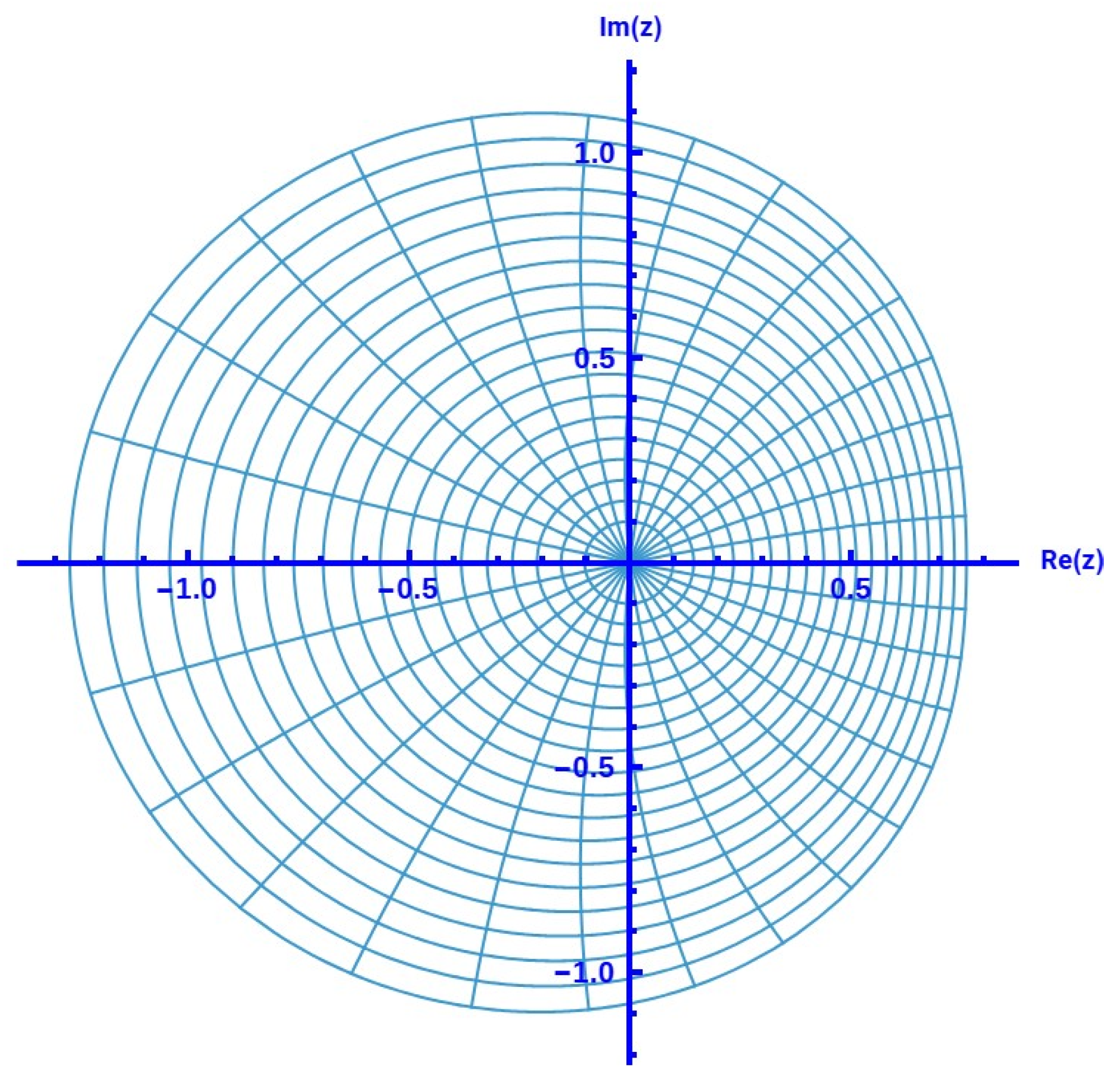

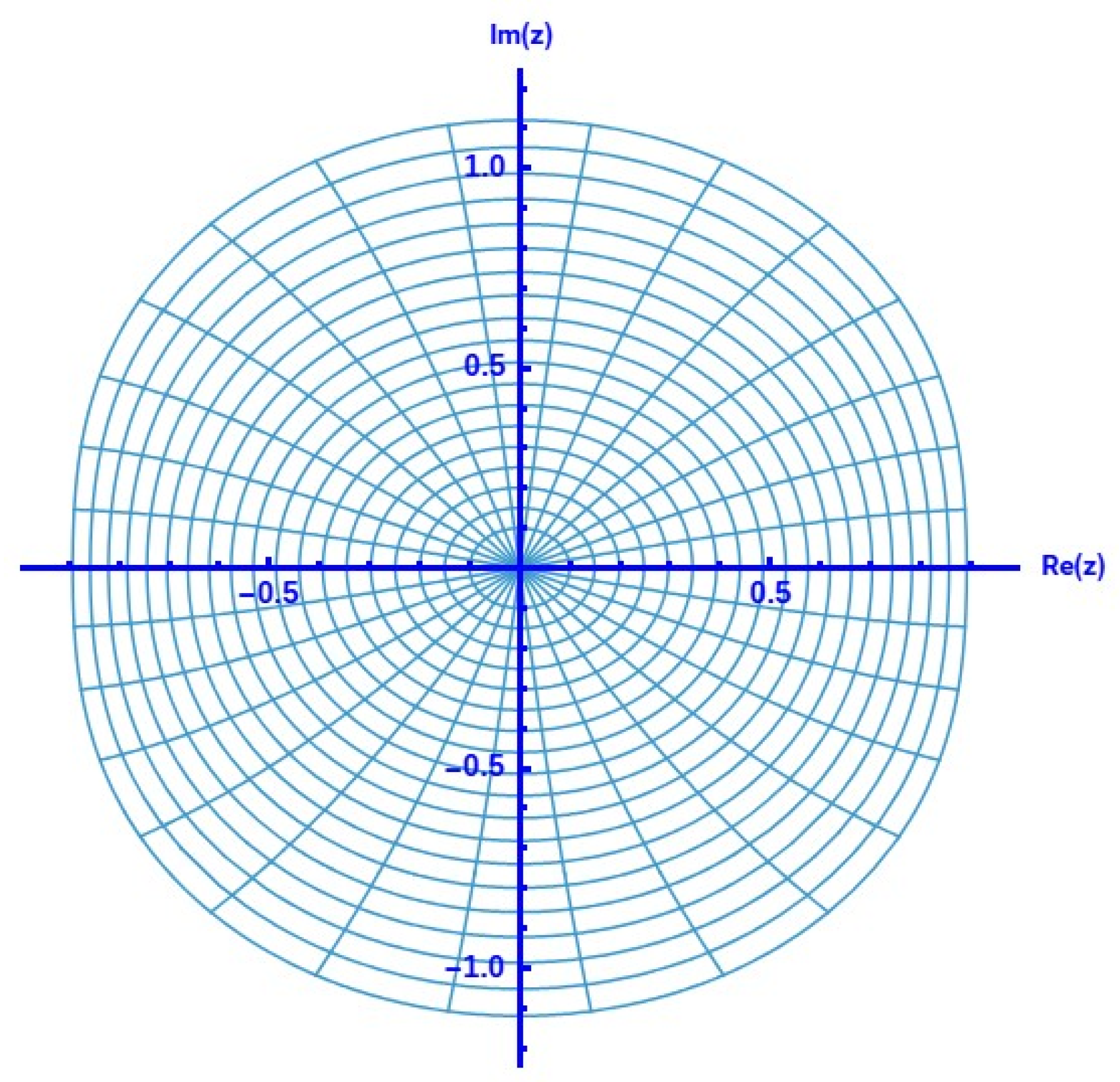
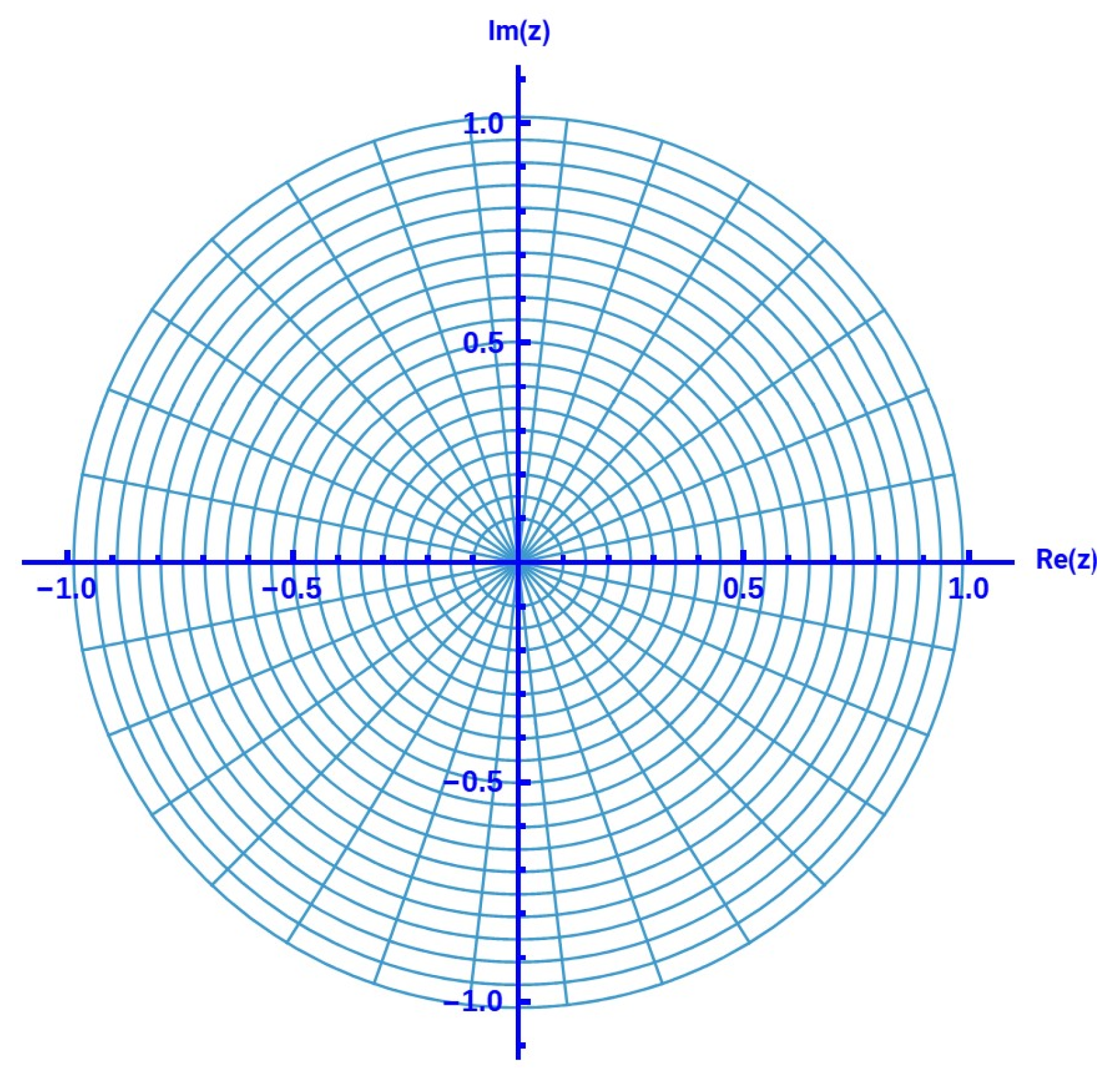

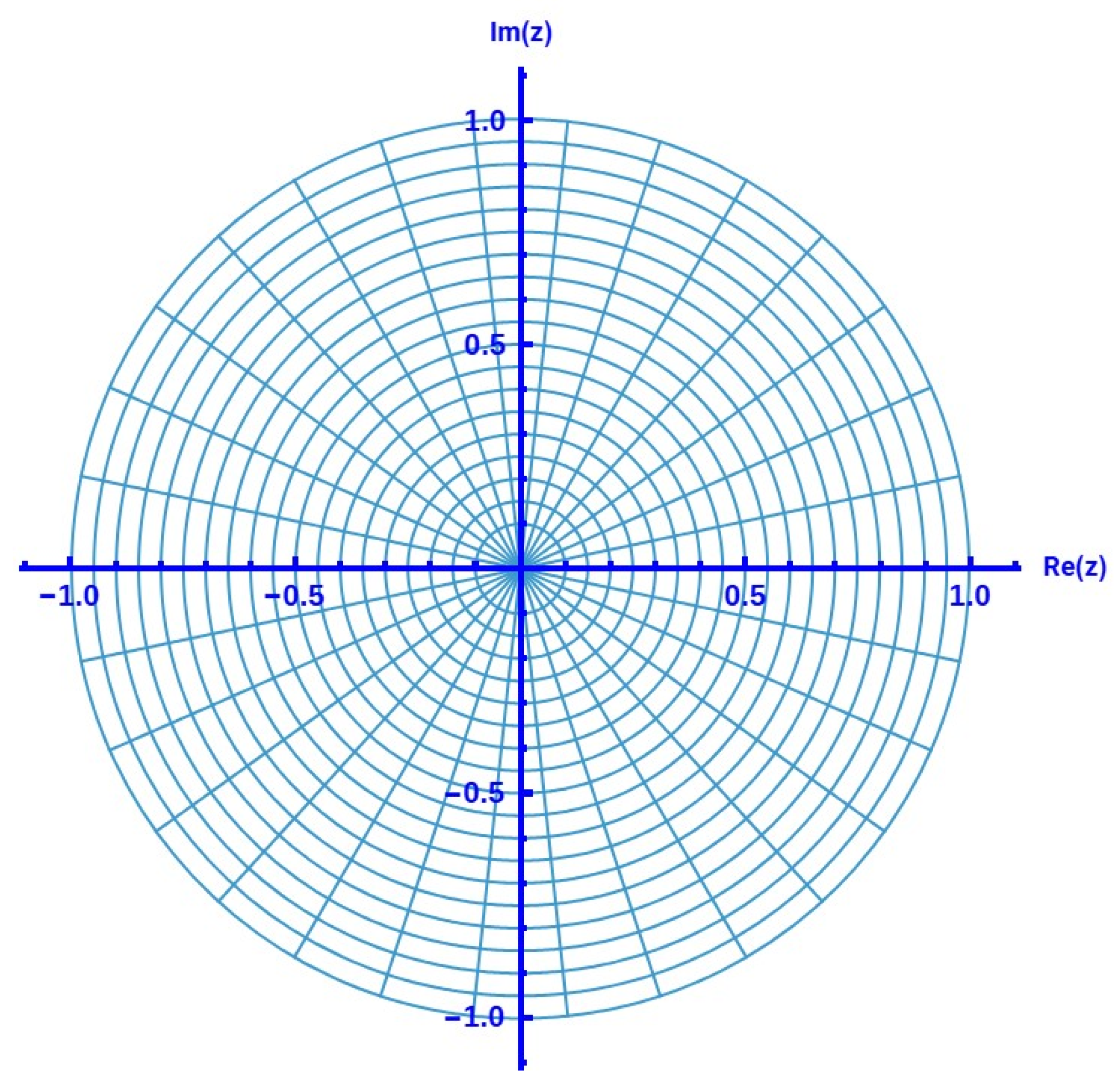

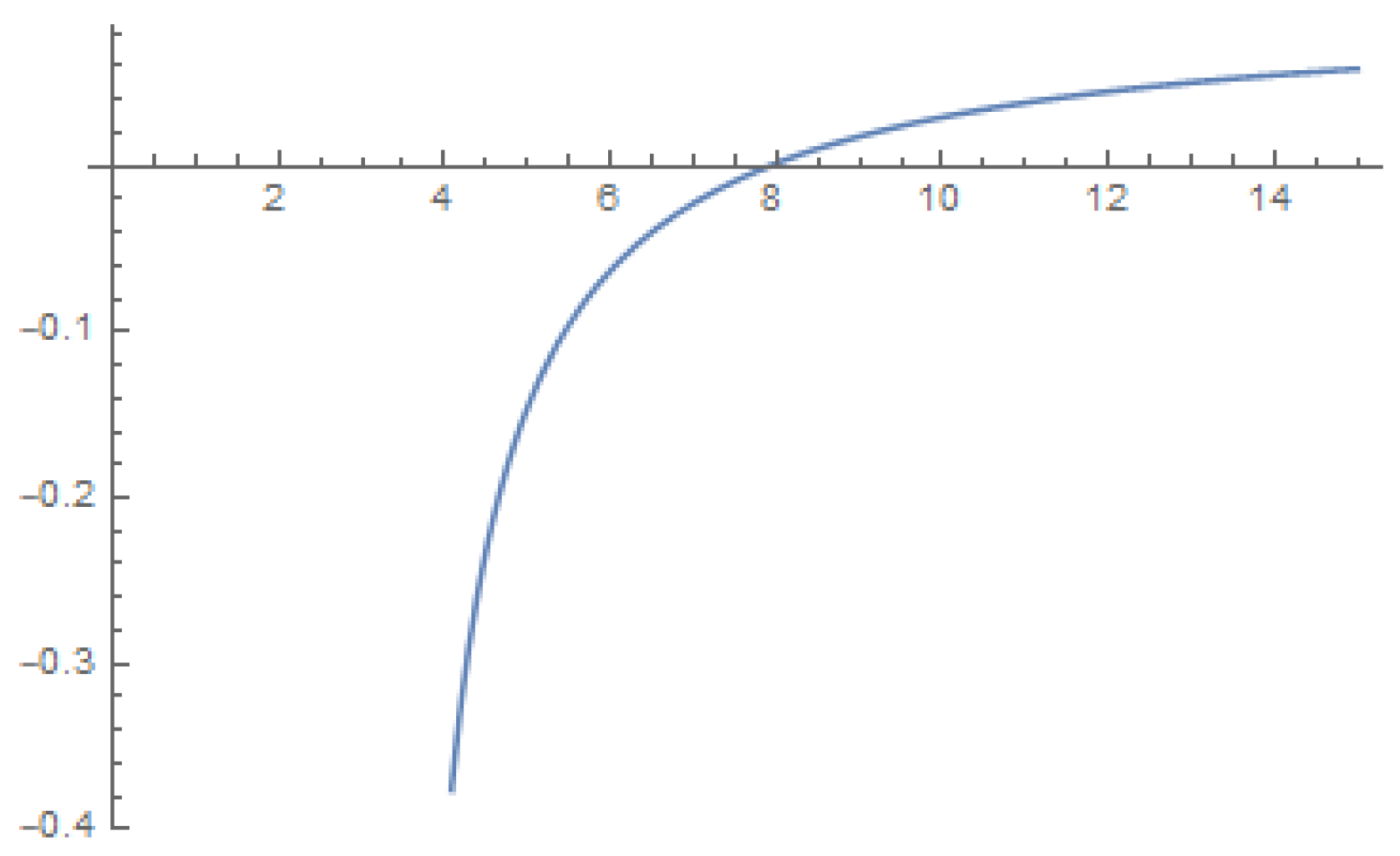
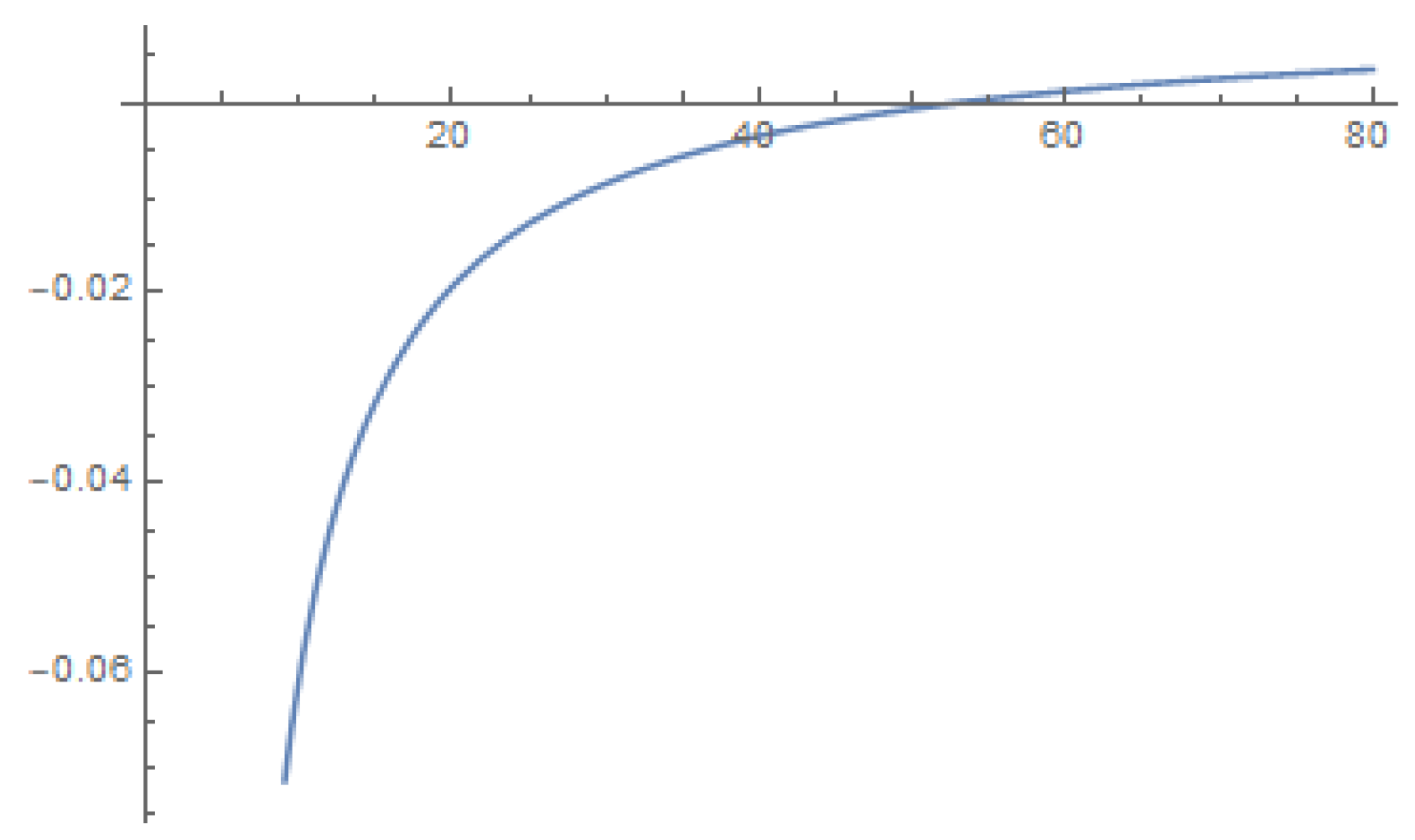

| 0 | |||||
| 2.55498 | 2.41242 | 2.12362 | 1.82564 | 1.15206 | |
| 0 | |||||
| 2.46906 | 2.24714 | 2.04187 | 1.66706 | 0.537909 | |
| 0 | 0.1 | 0.2 | 0.25 | 0.3 | |
| 2.30731 | 2.13892 | 1.85381 | 1.61724 | 1.23068 | |
| 0 | 0.1 | 0.11 | 0.12 | 0.14 | |
| 1.82564 | 1.15206 | 1.02352 | 0.864558 | 0.276299 | |
| 0 | |||||
| 3.56155 | 4.8798 | 7.53113 | 15.5156 | 39.5062 | |
| 0 | |||||
| 4.17231 | 6.03151 | 10.451 | 33.9825 | 60.0869 | |
| 0 | |||||
| 5.20071 | 8.27917 | 18.8266 | 36.8526 | 562.343 | |
| 0 | |||||
| 7.53113 | 9.52494 | 12.8521 | 19.5125 | 399.501 | |
| 0 | |||||
| 53.0306 | 61.2991 | 72.5894 | 88.928 | 845.15 | |
| 0 | |||||
| 0.553903 | 0.697249 | 0.951185 | 1.56042 | 2.82896 | |
| 0 | |||||
| 0.622088 | 0.81231 | 1.19493 | 2.57871 | 3.63989 | |
| 0 | |||||
| 0.730152 | 1.01663 | 1.77215 | 2.71094 | 12.6066 | |
| 0 | |||||
| 0.951185 | 1.12085 | 1.37563 | 1.81392 | 10.5072 | |
| 0 | |||||
| 3.37947 | 3.68311 | 4.06739 | 4.57529 | 15.6266 | |
| 0.43 | 0.5 | 0.75 | 0.8 | 0.9 | |
| 0.0072437 | 0.122499 | 1.08276 | 1.57111 | 4.04163 | |
| 0.3 | 0.4 | 0.5 | 0.7 | 0.8 | |
| 0.0130035 | 0.191305 | 0.470319 | 2.07371 | 6.60199 | |
| 0.15 | 0.2 | 0.4 | 0.5 | 0.7 | |
| 0.0262358 | 0.109304 | 0.72229 | 1.48708 | 69.3588 | |
| 0 | |||||
| 0.122499 | 0.359469 | 0.759532 | 1.57111 | 49.0049 | |
| 0 | |||||
| 5.72324 | 6.75303 | 8.1604 | 10.1987 | 104.708 | |
| 0 | 0.25 | 0.5 | 0.75 | 0.9 | |
| 0.122499 | 0.439036 | 1.08276 | 3.04992 | 9.02272 | |
| 0 | 0.25 | 0.5 | 0.75 | 0.8 | |
| 0.268808 | 0.717669 | 1.79878 | 7.64479 | 14.1612 | |
| 0 | 0.25 | 0.5 | 0.6 | 0.7 | |
| 0.516494 | 1.26564 | 3.87127 | 8.36066 | 139.707 | |
| 0 | |||||
| 1.08276 | 1.57111 | 2.39088 | 4.04163 | 99.0025 | |
| 0 | |||||
| 12.3989 | 14.464 | 17.2845 | 21.367 | 123.985 | |
| 0 | 0.25 | 0.5 | 0.75 | 0.9 | |
| 0.645715 | 0.78672 | 1.02863 | 1.58863 | 2.72421 | |
| 0 | 0.25 | 0.5 | 0.75 | 0.8 | |
| 0.71331 | 0.897324 | 1.25506 | 2.50153 | 3.44398 | |
| 0 | 0.25 | 0.5 | 0.6 | 0.7 | |
| 0.818548 | 1.08986 | 1.77987 | 2.61923 | 11.3816 | |
| 0 | |||||
| 1.02863 | 1.18668 | 1.42066 | 1.81747 | 9.52282 | |
| 0 | |||||
| 3.21306 | 3.4823 | 3.82281 | 4.27258 | 14.0561 | |
Disclaimer/Publisher’s Note: The statements, opinions and data contained in all publications are solely those of the individual author(s) and contributor(s) and not of MDPI and/or the editor(s). MDPI and/or the editor(s) disclaim responsibility for any injury to people or property resulting from any ideas, methods, instructions or products referred to in the content. |
© 2025 by the authors. Licensee MDPI, Basel, Switzerland. This article is an open access article distributed under the terms and conditions of the Creative Commons Attribution (CC BY) license (https://creativecommons.org/licenses/by/4.0/).
Share and Cite
Alabkary, N.; Mondal, S.R. On Spirallikeness of Entire Functions. Mathematics 2025, 13, 1566. https://doi.org/10.3390/math13101566
Alabkary N, Mondal SR. On Spirallikeness of Entire Functions. Mathematics. 2025; 13(10):1566. https://doi.org/10.3390/math13101566
Chicago/Turabian StyleAlabkary, Narjes, and Saiful R. Mondal. 2025. "On Spirallikeness of Entire Functions" Mathematics 13, no. 10: 1566. https://doi.org/10.3390/math13101566
APA StyleAlabkary, N., & Mondal, S. R. (2025). On Spirallikeness of Entire Functions. Mathematics, 13(10), 1566. https://doi.org/10.3390/math13101566








